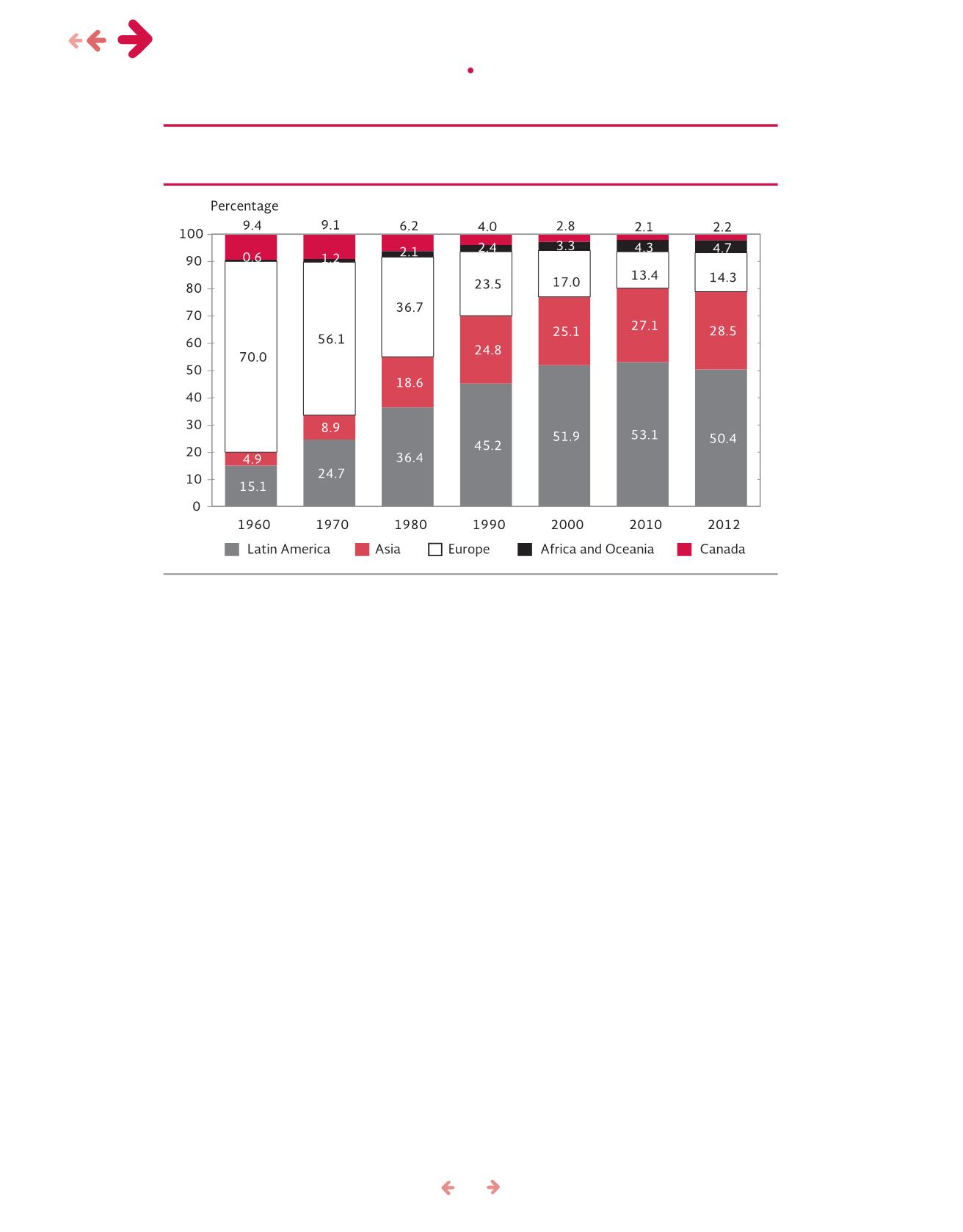
12
The last three decades of the 20
th
century saw
a considerable increase in the Mexican population li-
ving in theUnitedStates, which rose from879,000 in
1970 to8.1million in 2000. This doubling in number
every 10 years from 1970-2000 rise coincided with
changing labor market demand in the US and the im-
plementation of the
Immigration Reform and Control
Act
(irca) in 1987 that consolidated social networks
and facilitated furthermigration. The subsequent clo-
sing of the border forced a progressive abandonment
of the circular pattern of labor migration in favor of a
more family-based and permanent migration in the
UnitedStates (Massey, DurandandMalone, 2009).
In 2004, there were already 10.7millionMexi-
cans living in the United States, and in the next three
years the figure reached 11.8million (almost half of
whomwere women), a level that has since remained
stable. This growth results from the considerablemi-
gratory flow reached by the middle of the decade
(approximately 200,000 entering from Mexico an-
nually,withahistorical peakof560,000 in2005).The
number of newentrants fromMexicobegan todrop in
2006andby2013wasbelow100,000migrants. The
number of Mexican immigrants living in the US drop-
ped between 2010 and 2011 because the number
of Mexican immigrants leaving the US exceeded the
number of new immigrants entering (Figure2).
The population of persons born in the US of
Mexican descent rose from 16.6 million in 2004 to
22.6million in2013, andasa result therearecurrently
an estimated 34.3 million persons of Mexican origin
living in thecountry. Following theworldwideeconomic
crisis that began in2007, the number ofMexican im-
migrants living in theUnited States stabilized, though
there was still a gradual increase in the American po-
pulationofMexicanorigin.
The 11.8 million Mexicans living in the United
States in2013constituted4%of the total population
of the country, a proportion that has not varied since
2004. Mexicans are thus by far the largest immigrant
Source: Migration Policy Bureau, SEGOB, based on U.S. Census Bureau,
1-percent sample 1960
;
1-percent sample
1970
;
5-percent sample 1980; 5-percent sample 1990; 5-percent sample 2000; 1-percent sample 2010; American
CommunitySurvey
(ACS), 2012.MinnesotaPopulationCenter. IntegratedPublicUseMicrodataSeries (IPUMS),Min-
neapolis: UniversityofMinnesota.
Figure1. Distributionof foreignpopulation living in theUnitedStates,
by regionor countryof birth, 1960-2012
migration & health •
mexican immigrants in the us: a 10 year perspective


